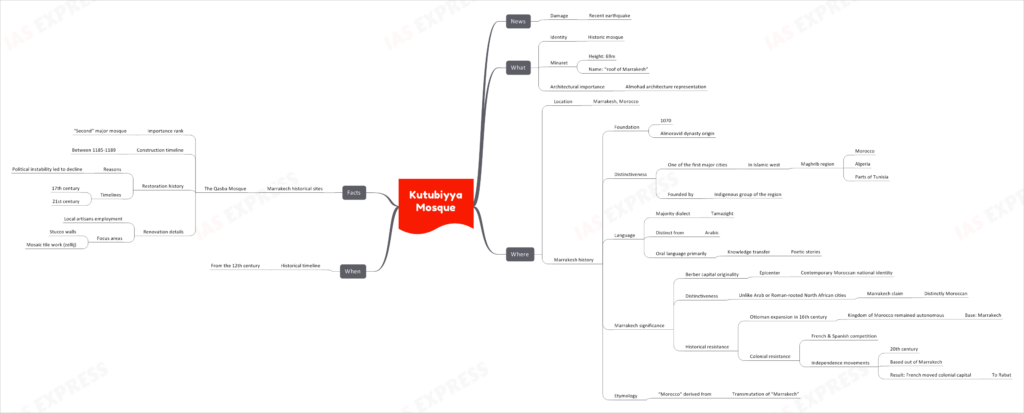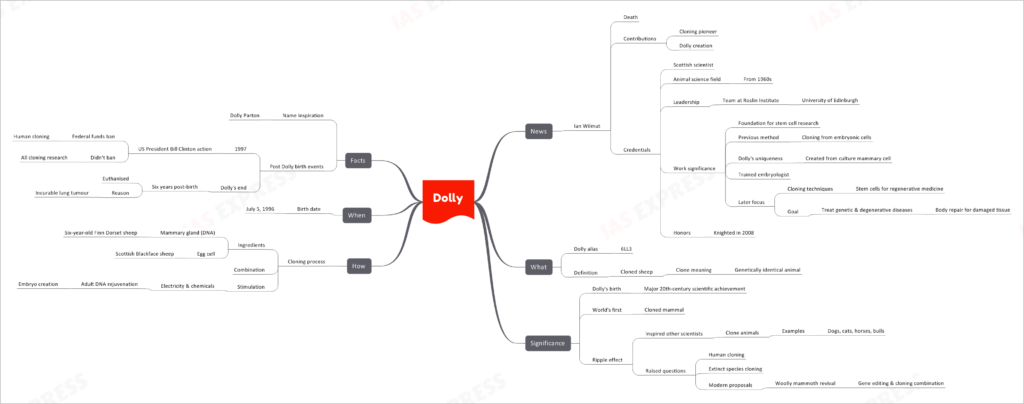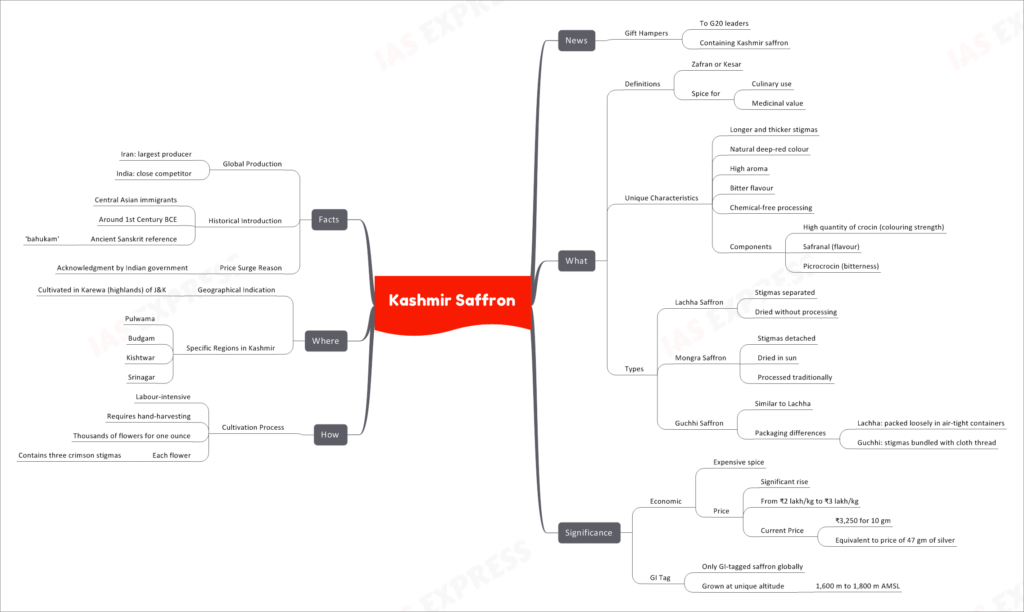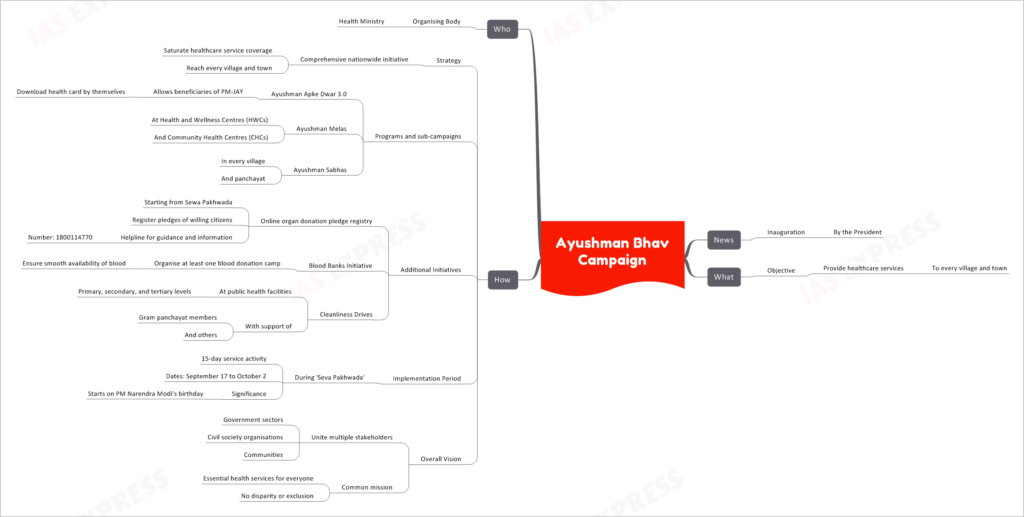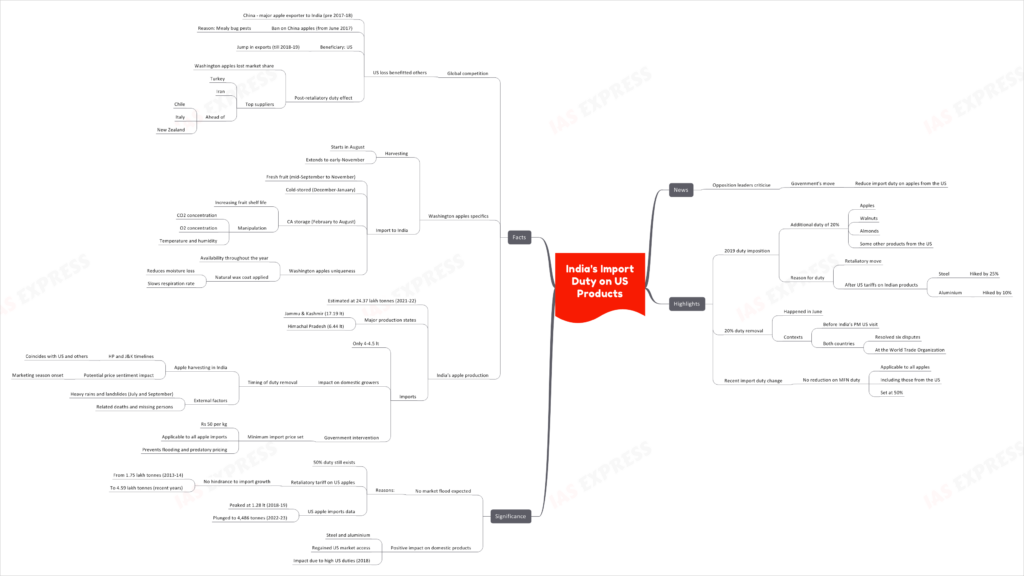[Newsbits] 13.09.2023

Kutubiyya Mosque
In recent news, the historic Kutubiyya Mosque in Marrakesh, Morocco, has suffered damage due to a recent earthquake.
What Is the Kutubiyya Mosque?
Identity
The Kutubiyya Mosque stands as a symbol of history and spirituality, representing one of the most iconic landmarks in Marrakesh.
The Minaret: "Roof of Marrakesh"
- Height: The minaret of the Kutubiyya Mosque soars to a height of 69 meters, earning it the nickname the "roof of Marrakesh."
Architectural Importance
This mosque is a testament to the magnificence of Almohad architecture, showcasing the artistry and craftsmanship of its time.
Where Is the Kutubiyya Mosque Located?
Location
The Kutubiyya Mosque graces the vibrant city of Marrakesh, Morocco, with its timeless presence.
Marrakesh History
- Foundation: Marrakesh was founded in 1070 and holds its origins in the Almoravid dynasty.
- Distinctiveness: It was one of the first major cities in the Islamic west, encompassing the Maghrib region, which includes Morocco, Algeria, and parts of Tunisia.
- Founders: The city was established by an indigenous group of the region.
Language and Significance
- Language: The majority dialect in Marrakesh is Tamazight, distinct from Arabic.
- Oral Language: Knowledge transfer in Marrakesh predominantly occurs through poetic stories.
- Marrakech's Significance: The city's Berber capital origin plays a pivotal role in shaping contemporary Moroccan national identity.
- Distinctiveness: Unlike Arab or Roman-rooted North African cities, Marrakech claims a distinctively Moroccan heritage.
- Historical Resistance: Marrakech resisted Ottoman expansion in the 16th century, maintaining the Kingdom of Morocco's autonomy, with Marrakech as its base. The city also played a central role in colonial resistance against French and Spanish competition, ultimately leading to independence movements in the 20th century. As a result, the French moved their colonial capital to Rabat.
Etymology
The name "Morocco" finds its roots in the transmutation of "Marrakech," emphasizing the city's historical significance.
When Does the Kutubiyya Mosque's History Begin?
Historical Timeline
The history of the Kutubiyya Mosque dates back to the 12th century, marking centuries of significance and cultural heritage.
Interesting Facts About Marrakech's Historical Sites
The Qasba Mosque
- Importance Rank: The Qasba Mosque holds the distinction of being the "second" major mosque in Marrakesh.
- Construction Timeline: It was constructed between 1185 and 1189, representing another remarkable architectural achievement in the city.
- Restoration History: The mosque has undergone restoration at various points in history, with political instability being a key driver of its decline. Restoration efforts were notable in the 17th century and more recently in the 21st century.
- Renovation Details: Local artisans played a crucial role in the mosque's renovation, focusing on restoring the stucco walls and intricate mosaic tile work, known as "zellij," preserving the mosque's historical and cultural significance.
Dolly
In the world of science and genetics, the name "Dolly" is synonymous with groundbreaking achievement. On July 5, 1996, a Scottish scientist named Ian Wilmut, working at the Roslin Institute, University of Edinburgh, forever changed the landscape of cloning and stem cell research by introducing Dolly, the world's first cloned mammal.
Who Was Dolly?
Ian Wilmut's Contributions
- Death: Sadly, Ian Wilmut, the scientist behind Dolly's creation, has passed away, leaving behind a remarkable legacy.
- Cloning Pioneer: Ian Wilmut will always be remembered as a pioneer in the field of cloning, with Dolly's creation as one of his most significant accomplishments.
Credentials of Ian Wilmut
- Scottish Scientist: Ian Wilmut was a Scottish scientist who made substantial contributions to the field of animal science.
- Long History: His involvement in animal science dates back to the 1960s.
- Leadership: He was part of a dedicated team at the Roslin Institute, affiliated with the University of Edinburgh.
Work's Significance
- Foundation for Stem Cell Research: Dolly's creation laid the foundation for extensive research into stem cells.
- Previous Cloning Methods: Before Dolly, cloning primarily involved using embryonic cells.
- Dolly's Uniqueness: Dolly was unique as she was created from a cultured mammary cell.
- Trained Embryologist: Ian Wilmut was a trained embryologist, which enabled him to develop advanced cloning techniques.
- Later Focus: He later shifted his focus to using cloning techniques for regenerative medicine, aiming to treat genetic and degenerative diseases and facilitate body repair for damaged tissues.
Honors
- Knighted in 2008: In recognition of his groundbreaking work, Ian Wilmut was knighted in 2008 for his contributions to science and cloning technology.
What Dolly Was
Dolly's Alias
- 6LL3: Dolly was sometimes referred to as "6LL3" in scientific circles.
Definition
- Cloned Sheep: Dolly was a cloned sheep, which means she was a genetically identical animal created through the process of cloning.
Significance
- Dolly's Birth: Dolly's birth was a major scientific achievement in the 20th century, capturing the world's attention.
- World's First Cloned Mammal: She was not just any cloned animal; she was the world's first cloned mammal.
- Ripple Effect: Dolly's creation inspired other scientists to explore cloning in various animal species, including dogs, cats, horses, and bulls.
- Raised Ethical Questions: Dolly's existence raised important ethical questions, especially concerning human cloning and the potential revival of extinct species.
- Modern Proposals: Her legacy even extends to modern proposals, such as the use of gene editing and cloning techniques to revive extinct creatures like the woolly mammoth.
How Dolly Was Created
Cloning Process
- Ingredients: Dolly's creation involved DNA from a six-year-old Finn Dorset sheep's mammary gland and an egg cell from a Scottish Blackface sheep.
- Combination: These ingredients were combined using advanced cloning techniques.
- Stimulation: Stimulation through a combination of electricity and chemicals rejuvenated the adult DNA, leading to the creation of an embryo.
When Did Dolly Arrive?
Birth Date
- July 5, 1996: Dolly was born on this historic day, marking a significant milestone in the world of science.
Interesting Facts
Name Inspiration
- Dolly Parton: Dolly was named after the famous American singer Dolly Parton, adding a touch of pop culture to the scientific breakthrough.
Post-Dolly Birth Events
- 1997: In the year following Dolly's birth, U.S. President Bill Clinton took action by banning federal funds for human cloning research while allowing other cloning research to continue.
- Dolly's End: Sadly, Dolly's life was relatively short, as she was euthanized six years after her birth due to an incurable lung tumor.
Morocco Earthquake
Recent news on September 8th shook the world as Morocco experienced a powerful 6.8 magnitude earthquake. This devastating event left a significant impact, and in this article, we will delve into the various aspects surrounding the Morocco earthquake, including its causes, consequences, and geographical context.
The Earthquake's Highlights
6.8 Magnitude Earthquake
On that fateful day, a 6.8 magnitude earthquake struck Morocco, sending shockwaves throughout the region.
Epicenter in High Atlas Mountains
The epicenter of the earthquake was located in the High Atlas Mountains, precisely 71 kilometers south-west of Marrakesh. This seismic event spanned across not only Morocco but also reached neighboring countries such as Algeria and Tunisia. It occurred to the south of the Eurasia and Africa (Nubia) tectonic plate boundary.
Geological History
The High Atlas Mountains, where the earthquake originated, have a rich geological history. They were formed during the breakup of the Pangea supercontinent and exhibit actively rising characteristics, with high peaks and steep slopes.
Casualties
Death Toll
Tragically, this earthquake led to a substantial loss of life, with the death toll reaching a staggering 2,862 individuals.
Understanding How It Happened
Morocco's Seismic Propensity
Morocco's seismic propensity, while significant in this instance, is relatively low when compared to countries like Turkey and Syria. This disparity can be attributed to the limited intersection of tectonic plates within the region.
Past Seismic Event
The earthquake harkens back to the memory of the 1960 Agadir earthquake, which caused significant damage and a loss of life, serving as a reminder of the seismic risks inherent in the area.
Atlas Mountains and Subterranean Movement
The steep slopes and straight crust lines in the Atlas Mountains indicate recent subterranean movement. The rate of this movement, approximately 1 millimeter per year, stems from the convergence of the Eurasian and African plates, which results in a squeezing action and the creation of some of the world's tallest mountains along the southern edge.
Earthquake Characteristics
The Morocco earthquake is a result of the reverse fault phenomenon, where tectonic plates collide, causing the Earth's crust to thicken. This thickening creates stress, which ultimately induces earthquakes as rocks shift to release accumulated stress, forming a seismic fault feature. The 6.8 magnitude suggests a fault length of approximately 30 kilometers.
Where It Occurred
Morocco's Location
Morocco, situated in North Africa, was the primary location affected by this earthquake.
Kashmir Saffron
In a remarkable gesture, India has presented gift hampers to the leaders of the G20 nations, containing the world-renowned Kashmir saffron. This highly sought-after spice, known as "Zafran" or "Kesar," possesses unique characteristics and a rich history that make it a valuable offering.
Definitions and Unique Characteristics
Zafran or Kesar
Kashmir saffron, locally referred to as "Zafran" or "Kesar," is a spice celebrated for its culinary uses and medicinal value. It stands out due to its extraordinary characteristics:
- Longer and thicker stigmas
- Natural deep-red color
- High aroma
- Bitter flavor
- Chemical-free processing
- Rich in components like crocin (coloring strength), safranal (flavor), and picrocrocin (bitterness).
Types of Kashmir Saffron
- Lachha Saffron: In this variety, stigmas are separated and dried without processing.
- Mongra Saffron: Stigmas are detached and dried in the sun, following traditional methods.
- Guchhi Saffron: Similar to Lachha, but with packaging differences – stigmas are bundled with cloth thread, whereas Lachha is packed loosely in air-tight containers.
Significance
Economic Value
Kashmir saffron is considered one of the world's most expensive spices, with prices soaring from ₹2 lakh/kg to ₹3 lakh/kg. Currently, it is valued at ₹3,250 for 10 gm, equivalent to the price of 47 gm of silver.
Geographical Indication (GI) Tag
Kashmir saffron holds the distinction of being the only GI-tagged saffron globally. Its cultivation at altitudes ranging from 1,600 m to 1,800 m above mean sea level (AMSL) in the Karewa highlands of Jammu and Kashmir contributes to its unique qualities.
How and Where
Cultivation Process
The cultivation of Kashmir saffron is labor-intensive and requires meticulous hand-harvesting. Thousands of saffron flowers are needed to produce just one ounce of saffron, with each flower containing three crimson stigmas.
Geographical Origin
Kashmir saffron is primarily cultivated in specific regions of Kashmir, including Pulwama, Budgam, Kishtwar, and Srinagar, all of which contribute to the spice's distinct flavor and aroma.
Facts
Global Production
While Iran is the largest producer of saffron globally, India is a close competitor, with Kashmir saffron being highly sought after for its quality.
Historical Introduction
The history of saffron in Kashmir dates back to around the 1st Century BCE when Central Asian immigrants introduced its cultivation. Ancient Sanskrit references even mention saffron as "bahukam."
Price Surge Reason
The acknowledgment of Kashmir saffron by the Indian government and its subsequent presentation as a diplomatic gift to G20 leaders has contributed to the recent surge in its price, highlighting its value on the global stage.
Ayushman Bhav Campaign
In a significant development, the President inaugurated a groundbreaking healthcare initiative aimed at providing essential healthcare services to every village and town in the country. This initiative, spearheaded by the Health Ministry, comes as a vital step towards achieving inclusive healthcare access for all.
Objective: Universal Healthcare Access
Providing Healthcare Services
The primary objective of this initiative is to ensure that healthcare services reach every village and town across the nation. The focus is on making essential healthcare accessible to all citizens, regardless of their location or socioeconomic status.
How: Strategy and Programs
Comprehensive Nationwide Initiative
The strategy behind this initiative is to create a comprehensive nationwide effort that saturates healthcare service coverage. The aim is to leave no area untouched and ensure healthcare reaches even the most remote regions.
Programs and Sub-Campaigns
To achieve this goal, several programs and sub-campaigns have been launched:
Ayushman Apke Dwar 3.0
- This program allows beneficiaries of the Pradhan Mantri Jan Arogya Yojana (PM-JAY) to download their health cards by themselves, streamlining the process and increasing accessibility.
Ayushman Melas
- Health and Wellness Centres (HWCs) and Community Health Centres (CHCs) host Ayushman Melas, providing a platform for healthcare outreach and awareness.
Ayushman Sabhas
- These gatherings are organized in every village and panchayat to engage the local community and promote healthcare awareness.
Additional Initiatives
In addition to the core programs, several supplementary initiatives have been launched:
Online Organ Donation Pledge Registry
- Starting during Sewa Pakhwada, citizens can register pledges for organ donation online. A dedicated helpline (Number: 1800114770) offers guidance and information.
Blood Banks Initiative
- The initiative aims to organize at least one blood donation camp in each area, ensuring a smooth supply of blood for medical needs.
Cleanliness Drives
- Cleanliness drives are conducted at public health facilities across all levels (primary, secondary, and tertiary), with the active participation of gram panchayat members and other community members.
Implementation Period
This extensive initiative is scheduled to take place during 'Seva Pakhwada,' a 15-day service activity from September 17 to October 2. Significantly, it commences on Prime Minister Narendra Modi's birthday.
Overall Vision: Unity and Equality
Uniting Multiple Stakeholders
The overarching vision is to unite multiple stakeholders, including government sectors, civil society organizations, and communities, in a common mission.
Common Mission
The common mission is clear: to ensure essential health services are accessible to everyone without disparities or exclusions. This initiative represents a significant step towards achieving this ambitious goal.
Who: Organizing Body
The Health Ministry is the organizing body behind this transformative healthcare initiative, signaling the government's commitment to improving healthcare access and inclusivity across the nation.
India’s Import Duty on US Products
In recent news, the Indian government's decision to reduce import duty on apples from the United States has stirred up discussions and debates among opposition leaders and experts. This move has various implications for the Indian market, especially concerning trade relations with the US and the domestic apple industry.
Opposition Leaders Criticize Government's Move
Government's Decision to Reduce Import Duty
The central point of contention lies in the government's decision to lower the import duty on apples imported from the US. This decision has faced criticism from opposition leaders, and it has raised several questions about its implications on the Indian economy and trade dynamics.
Highlights
2019 Duty Imposition
Additional Duty of 20%
In 2019, India imposed an additional duty of 20% on various products imported from the US, including apples, walnuts, almonds, and more. This move was seen as a retaliatory response to the US tariffs on Indian products, such as steel (hiked by 25%) and aluminum (hiked by 10%).
20% Duty Removal
The reduction of the 20% duty on US apples occurred in June. This decision was made in the context of India's Prime Minister's visit to the US, during which both countries resolved six disputes at the World Trade Organization.
Recent Import Duty Change
It's essential to note that while the 20% duty was removed, there was no reduction in the Most Favored Nation (MFN) duty, which applies to all apples, including those from the US. The MFN duty remains set at 50%.
Significance
No Market Flood Expected
Reasons for Limited Impact
Despite the reduction in import duty, experts predict that the Indian market won't be flooded with US apples for several reasons. Firstly, the 50% MFN duty still exists, acting as a significant deterrent. Additionally, retaliatory tariffs on US apples have not hindered import growth, which has risen from 1.75 lakh tonnes (2013-14) to 4.59 lakh tonnes in recent years. Import data shows that US apple imports peaked at 1.28 lakh tonnes in 2018-19 but plunged to 4,486 tonnes in 2022-23.
Positive Impact on Domestic Products
The reduction in duty has positive implications for domestic products, particularly steel and aluminum. These industries have regained access to the US market, which was impacted by high US duties imposed in 2018.
Facts
Global Competition
US Loss Benefitted Others
The US's loss in the Indian apple market has benefited other countries. China, a major apple exporter to India before 2017-18, faced a ban on its apples due to Mealy bug pests in June 2017. This ban opened up opportunities for the US, resulting in a jump in exports until 2018-19. However, post-retaliatory duties, Washington apples lost market share to top suppliers like Turkey, Iran, Chile, Italy, and New Zealand.
Washington Apples Specifics
Harvesting and Import
Washington apples have a unique harvesting and import cycle. Harvesting starts in August and extends to early November. Import to India occurs in various forms: fresh fruit (mid-September to November), cold-stored (December to January), and CA storage (February to August). CA storage involves manipulating CO2 concentration, O2 concentration, temperature, and humidity, increasing the fruit's shelf life. The uniqueness of Washington apples lies in their availability throughout the year, thanks to a natural wax coat that reduces moisture loss and slows the respiration rate.
India's Apple Production
India's apple production was estimated at 24.37 lakh tonnes in 2021-22, with major production states being Jammu & Kashmir (17.19 lakh tonnes) and Himachal Pradesh (6.44 lakh tonnes). Despite this, India imports only 4-4.5 lakh tonnes of apples, which raises questions about the impact on domestic growers.
Government Intervention
To safeguard domestic growers, the government has set a minimum import price of Rs 50 per kg, applicable to all apple imports. This measure prevents flooding the market and predatory pricing, ensuring that local farmers are not adversely affected.
